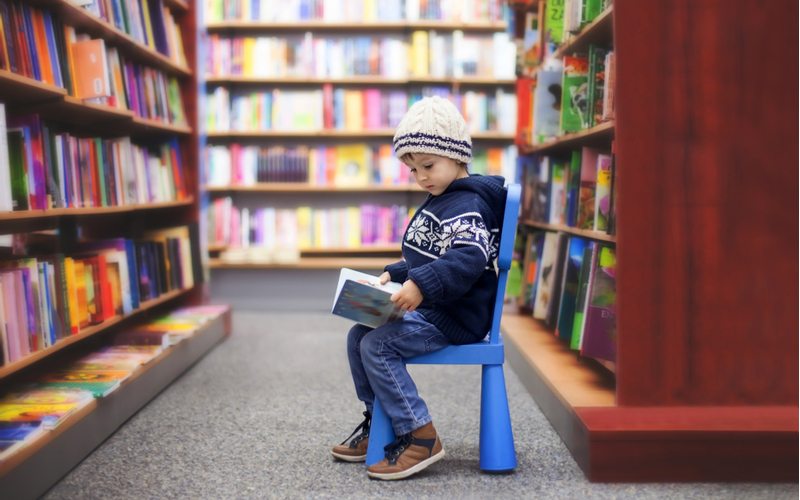Here’s a secret- As an early intervention pediatric physical therapist, when I use a book while I ‘play’ with your baby, I can also assess their fine motor skills, cognition, play skills, expressive and receptive language, and vision.
By the time a child enters kindergarten, they should have read 1000 books. WHAT?!?
Imagine, if you read one book a day with your child, for 365 days a year, by the time they’re three years old, that’s 1095 books. I’m sure that there are even days that you read many more than a single book with your child.
A book is a great multisensory toy as it’s essential for learning, at any age, especially in this age of technology. This article will outline the growth and development of a child respective of a book.
Early on in development, a book serves as an oromotor stimulant that a baby can explore.
Handling a book may begin as a single-handed activity, and expand to using both hands at the midline. Some books have sensory and auditory stimuli that maintain their attention.
Pictures are colourful and can be used to facilitate eye gaze and head control.
Then as the child realizes that there’s something inside this square or rectangular object they begin to use it as a hinge.
Your child will begin to open and close it numerous times, manipulate the book and gaze inside.
As their intellectual curiosity increases, they begin to seek more information from this object and it’s not only a hinge, it’s a hinged toy with content and context.
This next phase is a significant one. What do those pictures mean to your child?
It’s important to see whether your child gazes at both sides of the page, or do they randomly turn pages.
Your child will develop an association between familiar items and people with sounds or real objects.
They may tap the picture, gaze in your direction; this is referred to as conjoint attention.
At this time, you can begin to label the object, and they may attempt to approximate consonant sounds or words.
They eventually read to themselves with jargon and inflections that mirror your own. They will increase their repertoire by seeking out different books with a variety of context.
Slowly, their attention span and curiosity will increase. I’m not specifying the length for each of these phases because this differs for every child.
In the perfect world: your child will love books, love the time you spend together and they will be available to learn.
In short, when I read a book with your child I’m checking the muscle strength of their arms and fingers and their fine motor ability to manipulate this object.
I’ll observe whether they’re eating, banging, opening and closing or just throwing the book.
I’ll listen to the sounds they make or word approximations that they use while they look at a book; lastly, and most importantly, I’ll see what this object with pictures means to your child, and take it from there.
This is the first opportunity we have as parents, and as educators, to signal to them that there is a time to move and play; however, there is also a time to stop, look and listen during play and this is an important message for every child.
Aside from spending quality time with your child, reading will prove to be the foundation for later literacy, cognitive and language skills.
READ ON!
